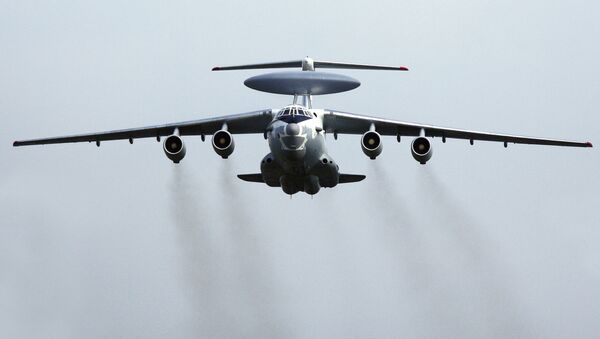The Beriyev A-100LL is built around the A-50 early warning and control (AWACS) aircraft and is designed to stress-test all of the plane’s elements and the electromagnetic compatibility of Russia’s next-generation A-100 airborne early warning and control (AWACS) aircraft.
“The Premier-476 ‘flying lab’ enables us to test its elements and their compatibility thus ensuring quality implementation of our mission and save time and money during the flight tests of the A-100, which is based on the Il-76MD-90A platform,” Verba added.
Work on the creation of a new generation of the AWACS system in Russia uses fundamental studies in the field of radiolocation and information technologies.
“This will enable us to look ahead and create future technologies for our defense and economic sectors,” Vladimir Verba said.
The A-100 AWACS plane is built around a multilateration radar unit featuring a pair of phased-array antennas capable of detecting enemy fighter planes at a distance of up to 600 kilometers and surface ships up to 400 kilometers away.
Defense Minister Sergei Shoigu earlier said that the A-100, designed to keep an eye on aerial and ground targets, was able to detect new types of targets and direct attack aircraft to destroy them.
The A-100’s maiden flight to stress-test all its systems in the air is slated for March of next year.If everything goes well, the “flying radar” will become operational in 2018.



